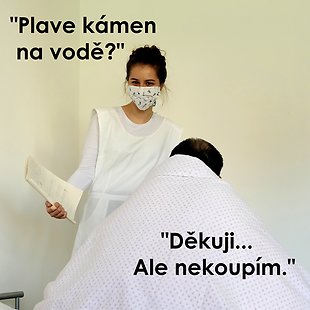Delirium
Delirium is a life-threatening and highly underdiagnosed condition. It is a reaction of CNS to damage, manifested by a qualitative impairment of consciousness, decreased attention. Delirium usually starts suddenly in the evening and has a fluctuating course. It can have many causes: organic, toxic (caused by the administration of anticholinergics, dopaminergic antiparkinsonian drugs), and may be caused by withdrawal state as well (D. tremens). According to symptoms we distinguish hypoactive, hyperactive or mixed delirium.
Review
Delirium is a common complication of critically ill patients, most often during the postoperative period in patients over 65 years. Many factors, such as infection, systemic inflammatory response, metabolic disruption, hypoxemia, insufficient analgetic therapy after surgery, are critical for the development of brain dysfunction - delirium. Its onset significantly worsens the therapy outcomes, mortality and morbidity of patients. With quick diagnostics and knowledge of risk factors, it can be partially prevented.
The Delirium virtual scenario clearly displays the main characteristics of delirium (hyperactive, hypoactive - silent and mixed delirium), its risk factors and options for prevention and subsequent treatment. The algorithm allows us to practice this issue from diagnostics to a multi-component therapy with frequent reorientation, sufficient analgesia, or correctly choosen analgosedation, hydratation, early rehabilitation and other measures. This allows us to take better care of our patients.
Sources
Scottish Intercollegiate Guidelines Network (SIGN): Risk reduction and management of delirium [online]. Edinburgh: SIGN, 2019, (157) [cit. 2020-03-23]. Available from: http://www.sign.ac.uk
PILCH, Roman. 2011.Diagnosing and treating delirium tremens. Psychiatrie pro praxi [online]. 12(4), 153-155 [cit. 2020-03-30]. ISSN 1803-5272. Available from: https://www.psychiatriepropraxi.cz/pdfs/psy/2011/04/05.pdf
LUKASOVÁ, Marie. Právní pohled na používání omezovacích prostředků. OMEZOVACÍ PROSTŘEDKY V PSYCHIATRII [online]. [cit. 2020-03-30]. Available from: http://www.reformapsychiatrie.cz/wp-content/uploads/2019/07/1_SOUHRNNA-ZPRAVA-OP_PRAVNI-POHLED.pdf
SHAH, Ami G., Michelle PEAHOTA, Brandi N. THOMA and Walter K. KRAFT. Medication Complications in Extracorporeal Membrane Oxygenation. Critical Care Clinics [online]. 2017, 33(4), 897-920 [cit. 2020-03-31]. DOI: 10.1016/j.ccc.2017.06.010. ISSN 07490704. Available from: https://www.researchgate.net/figure/Confusion-assessment-method-for-the-ICU-CAM-ICU-Flow-sheet_fig1_303790119
MITÁŠOVÁ, A., J. BEDNAŘÍK, M. KOŠŤÁLOVÁ, et al. Standardizace české verze The Confusion Assessment Method for the Intensive Care Unit (CAM‑ICUcz). Česká a slovenská neurologie a neurochirurgie. 2010, 73/106(3), 258-266. ISSN 1210-7859.
FIALOVÁ, Daniela, Eva TOPINKOVÁ, Anna BALLÓKOVÁ a Hana MATĚJOVSKÁ-KUBEŠOVÁ. Expertní konsenzus ČR 2012 v oblasti léčiv a lékových postupů potenciálně nevhodných ve stáří: Vhodnost volby léčiv a dávkovacích schémat u geriatrických pacientů (Oddíl I.), interakce lék–nemoc ve stáří (Oddíl II.). Klinická farmakologie a farmacie [online]. 2013, 27(1), 18 - 28 [cit. 2020-06-01]. Dostupné z: https://www.klinickafarmakologie.cz/pdfs/far/2013/01/05.pdf





